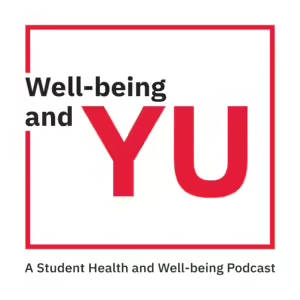
Not surprisingly, today’s students are extremely worried about their finances:
52% of students have reported experiencing a significant change to their financial situation because of COVID-19 and are worried about their future job prospects and financial future1
79% of post-secondary students are concerned about whether they will be able to pay their fall tuition2
76% are worried about how to pay rent and utilities in the fall2
66% are worried about credit card bills or other loan repayments2
If you are a student, we want to help you cope during these uncertain times and suggest six practical actions you can consider taking to help gain control of your finances and ease your concerns so you can better focus on your education.
1. Understand your financial situation
Given today’s financial uncertainty, it’s more important than ever to have a solid understanding of your own finances. This involves a full assessment of your finances to determine how much income you’re generating, what your monthly expenses are, how much you’re spending on essential vs non-essential items and how much you could manage to save on a regular basis. This financial snapshot will give you a clearer picture of your current financial situation and will help you figure out steps you could take to meet your short- and long-term financial goals.
Once you’ve completed this exercise, you’ll want to evaluate your priorities, both now and in the future, while also establishing financial goals that are realistic for your unique circumstances. For example, you’ll need to figure out whether it’s more important to pay for your books and tuition without going into debt or put money aside for a down payment on a home. While it may take you longer now to reach your financial goals than before the pandemic, your current financial situation is likely temporary.
2. Create an essentials-only budget
Creating and maintaining a budget is an excellent way to gain control of your finances under normal circumstances, and it becomes even more important during challenging times like now. With a potential loss of income, you should consider refocusing your budget on essential expenses only. This type of streamlined budgeting is often a stop-gap measure and can help you reach your financial goals (e.g., paying off debt) while still effectively managing your current expenses.
To begin this budgeting exercise, examine your last two months of bank and credit card statements. Essential expenses typically include shelter, food and toiletries, utilities, car expenses, debt payments, insurance and medical needs. Non-essential expenses may include subscription services, entertainment, prepared meals, clothing and home décor. Remember that cutting back on non-essential purchases is not permanent. You are simply reducing costs over the short term to help you better manage your daily expenses, pay down debt, build up your savings and work toward achieving your financial goals. You may even discover that you don’t miss certain non-essential expenses as much as you had expected. For more details, check out our article “What does an essentials-only budget look like?”
3. Start an emergency fund
If you don’t already have an emergency fund, the pandemic has shown us how important it is to set aside money for unexpected costs or expenses. A recent Scotiabank survey revealed that students would have prepared differently had they known a pandemic was imminent, including establishing an emergency fund.3 Many experts suggest an emergency fund should cover at least three to six months of total living expenses. Having access to a ready reserve of cash will bolster your emotional well-being and prevent you from taking on added (and unplanned) debt. Furthermore, since most students – as well as the general population – have had to curtail or cancel their travel plans this year, reallocating these discretionary dollars to an emergency fund can help relieve stress and provide greater peace of mind.
4. Make use of government aid
In April 2020, the Canadian government announced $9 billion in financial aid for post-secondary students in response to COVID-19. Find out if you’re eligible for such programs relating to student benefits, grants, scholarships and fellowships, and keep updated on future support programs via the Government of Canada website. Just bear in mind that certain government benefits are taxable, so don’t assume it’s all “free money” or you could face an unwelcome surprise when you file your next income tax return.
5. Take a practical approach to managing debt
If you’re short on cash, consider these options to finance your post-secondary education:
Consider a student loan. The federal government offers loans to full-time and part-time students to pay for their post-secondary education. The loan amount depends on your circumstances (e.g., family income), but as a result of COVID-19, the federal government is changing the eligibility requirements for 2020-21 so more students could qualify for support and gain access to higher loan amounts.
Apply for a personal loan or line of credit. The interest rates on a personal loan or line of credit are typically lower than a credit card.
Get a lower interest rate credit card. With the current crisis situation, many cash-strapped students may use a credit card to make their essential purchases this fall. If you must carry a balance, consider using a lower-interest rate credit card that could help you save money on interest by reducing your interest charges. .
Consider a balance transfer. If you already have credit card debt, you can save money by transferring existing high-interest rate credit card debt onto a new lower interest rate credit card (or line of credit) that offers a low promotional interest rate for a certain period. For instance, you could find out more about the Scotiabank Value® Visa* Card, that offers a low introductory interest rate on balance transfers (see link for details).
6. Find creative ways to earn income
If you’re thinking about your next internship or a part-time job that can supplement your income, consider targeting jobs within “high demand” industries. Although some businesses are struggling these days given the difficult circumstances, others are thriving (such as food, delivery, health care and technical services). This may also be a good time to channel your inner entrepreneur, as you never know what innovative idea might turn into a successful business! If you’re a technology whiz, perhaps you can help small businesses set up online stores, or if you’ve got a green thumb, advertise your gardening or landscaping services. Similarly, if you are multi-lingual, teach a virtual language class or become a tutor. You could also get involved and give back to your community by volunteering for an organization or other cause that is meaningful for you. Although volunteer work may not pay, it could result in learning new skills, making valuable contacts and gaining experience or new perspectives will help enhance your résumé and pay dividends as your career progresses.
References
Scotiabank. (2020, August 13). Helping to manage financial stress as a student. Retrieved from https://www.scotiabank.com/ca/en/personal/advice-plus/features/posts.helping-to-manage-financial-stress-as-a-student.html


